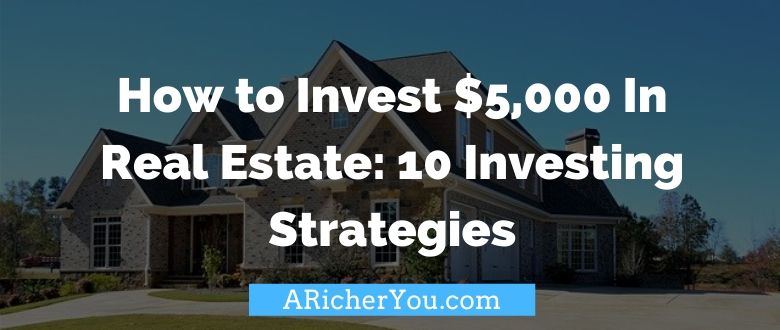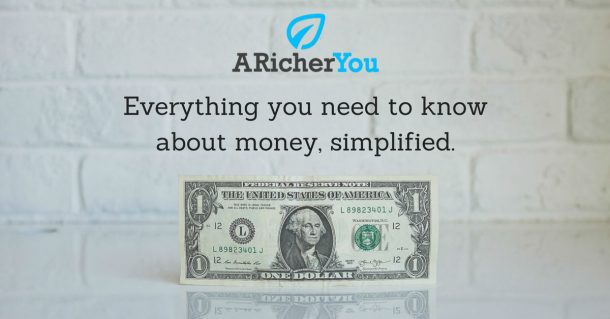How can I start investing in real estate with just $5,000?
One of the biggest challenges for anyone wanting to get started in real estate is coming up with the capital to get started. Unfortunately, real estate is one of the areas where it really does take money to make money.
That being said, there are ways to start your investment empire with under $5,000. In fact, you can start investing in real estate for as little as $10.
Just remember, investing is always risky. The smartest decision you can make with your money is to diversify your investments to protect yourself if one of your investments goes bad.
If you want to know how to invest 5k in real estate, you’ve come to the right place. I’ll update this article with new strategies as I discover them. For now, here are 10 ways to invest $5,000 in real estate – 3 passive strategies, and 5 active strategies.
How to Invest $5,000 In Real Estate: Passive Investment Strategies

If you want to make money in real estate, but don’t want to spend a lot of time, these three passive real estate investing strategies are a great place to start.
That being said, these investments can be a great way to grow your wealth with relatively low risk and effort.
1. Invest in publicly traded REITs (Real Estate Investment Trusts)
It’s possible to buy shares in real estate in the same way you purchase stock in Amazon or Apple. If you want to invest in real estate, look for REITs, which are special funds focused exclusively on real estate.
Most REITs have a focus – such as theaters, malls, apartment buildings, specific regions, or mortgage debt. To be designated as a REIT, the company must distribute at least 90% of its revenue to investors every year – meaning you’ll generally get a nice dividend from these investments.
You can use the same platform you use to buy and sell stocks to invest in REITs. Personally, I invest through M1Finance – as I enjoy their no fee model combined with the ability to buy fractional shares. Right now I own shares in the Vanguard REIT ETF, which invests across multiple REITs.
2. Invest in fix and flip loans with Groundfloor
With as little as $10, you can invest in fix and flip loans through Groundfloor. Based on the projected risk level of the loan, targeted returns are anywhere from 7-14%.
Because of the low cost to get started, it’s easy to diversify a $5,000 investment across as many as 500 different properties – providing protection from losing everything if any of your investments default.
Personally, I’ve invested in 30 loans with 4 defaulting (only losing money on 1 of these defaults). If I had put all of my money in the one investment where I lost out, I would have lost about 75% of my investment. However, because I’ve diversified, my return is still over 7%. Therefore, as you can see, it’s important to diversify!
Right now Groundfloor is offering readers of A Richer You a $10 sign up bonus after making their first investment of $10. If you’re looking for a unique way to “be the bank”, Groundfloor is a great place to start.
3. Invest in private REITs with Fundrise
My all-time favorite passive real estate investment platform is Fundrise. You can invest as little as $500 in Fundrise – and receive a targeted 8-12% annual return.
Fundrise invests in apartment buildings and affordable housing across the country. When you invest in one of their funds, you’re buying into a huge portfolio of properties – providing automatic diversification and access to investments that are typically only available to high networth investors.
I’ve invested in Fundrise since 2016 with an average return of 8.5% on a moderate portfolio – and have the possibility to receive a significantly higher return when these properties are sold (provided the properties appreciate).
If you’re truly looking for a set-and-forget real estate investment, Fundrise is a great place to start.
How to Invest $5,000 In Real Estate: Active Investment Strategies

If you’re willing to invest your money and time, there are even more ways to invest $5k.
Below are 7 strategies you can use to actively invest in real estate with $5,000.
1. Buy an inexpensive primary residence
It’s possible to buy a primary residence with a down-payment as low as 3% (or 0% if you’re a veteran). This means you could buy a home worth up to $100,000 with around $5k.
Of course, to find a property costing under $100,000 you’ll need to live in specific regions, be comfortable in a fixer-upper, and/or purchase a condo.
But if you can find a property you are willing to live in, this can be a great way to get started in real estate investing.
Additionally, you’re typically able to purchase a new primary residence every year – giving you the opportunity to move into a new home and rent out your previous property.
Essentially, you could do this to buy a new property every year! You’ll just need to make sure that rent will cover your monthly payments before purchasing the property.
One more note: You can legally buy up to a 4-unit building as your primary residence. This means you could buy multiple units every year if you look in the right places.
2. Find a property with seller financing
Seller financed properties aren’t always easy to find, but it is possible.
If you’re willing to be patient, search around, and talk to people, you could find a property where a seller is willing to carry the note (meaning, they’ll be the bank).
Most of the time, for a seller to cover financing, they’re going to want some sort of benefit in return. Typically, you’ll have a higher interest rate and shorter payback period (perhaps 5-10 years rather than 30).
If you are confident that you can make the higher monthly payments, seller financing can be a great way to buy your first property if you don’t have the cash available right now (but will have it in the future).
3. Buy property with a partner
If you have a great credit score and can get a mortgage, but just need help with a downpayment, you may be able to find a partner willing to go in on the deal with you.
An individual is only able to have 10 “regular” mortgages. After 10 loans, investing in real estate gets more complicated.
Because of this, an investor who has already maxed out their 10 properties (or wants to work toward this) may be willing to partner on an investment. They may be willing to cover the down-payment in exchange for 50% ownership of the property – creating a win for both of you.
Particularly if you can find good deals and are willing to put in the sweat equity to fix and manage a property, you should be able to find investors willing to foot the down payment.
4. Find a hard money lender
If you’re handy and interested in fixing and flipping a property, you could find a hard money loan for most (if not all) of the property purchase price.
Typically, hard money loans are difficult for new investors to acquire, as the lender is taking a risk on your ability to fix and sell the property. Furthermore, you’ll need to have money and time to invest in the property – which may be difficult if your max budget is $5,000.
Finally, these loans are often for a short period of 6-12 months. This means you’ll either need to be able to refinance or sell the property within this period.
For the right person, a hard money loan can be a great resource. But for many of us, it’s not the best strategy to use.
5. Borrow money from friends and family
If you have family members (or really good friends) who support an entrepreneurial spirit, you may be able to ask them for a loan on far better terms than a typical bank or lender would provide.
A parent or grandparent may be willing to lend you the money for a downpayment with simple terms where you pay them back when you sell the property, or make a low monthly payment you’ll be able to afford.
Of course, any time you borrow money from family or friends you want to make sure that they walk away feeling good about you. So make sure you treat them like a regular lender and pay them back (providing a little bonus if possible).
The last thing you want to do is end up ruining relationships due to an overly risky investment.
6. Become a wholesaler and bring buyers and sellers together
Wholesaling is another investment strategy I wouldn’t recommend unless you’re really committed to spending time and hustling. If the thought of being a salesperson stresses you out, ignore this method.
However, many people have made good money wholesaling, so it’s worth mentioning.
Essentially wholesaling is getting a contract to buy from a seller, and then finding someone willing to buy the property for more and selling to them – before you actually take ownership of the property.
For example, you find a seller who agrees to sell you a property for $120,000. Then, you find a buyer willing to buy the property for $130,000. In the end, you keep the difference of $10,000.
As you can see, this is a relatively complex process that requires moving fast and having the ability to find the right buyers and sellers. However, if you’re a good networker and build up an email list, you could find this to be a profitable way to make bank with a small investment.
7. Become a real estate agent
If you’re truly interested in building a real estate empire without much money, why not become a real estate agent?
To become a Realtor simply requires taking a course and an exam. In fact, you can find an online real estate licensing course for under $100 on Groupon in most states.
Once licensed, you can become a full-time real estate agent, or simply do it part-time on the side. Because you’ll make 1.5-3% for every property you sell, if you’re a good salesperson you could easily earn money to assist with your next investment. All while learning about your local market!
Conclusion: Diversify your investment
As you can see from the list above, there are quite a few unique ways to invest $5,000 in real estate.
From passive investments like Fundrise and Groundfloor, to active investments like partnering with someone or buying a low-cost property.
Regardless of which investments you choose, remember to diversify your investments. While real estate has made many people rich, it’s also bankrupted many people who became too greedy and took too big of a risk at the wrong time.
By dividing your money across multiple investments and platforms, you’ll help keep your wealth growing securely and steadily.


